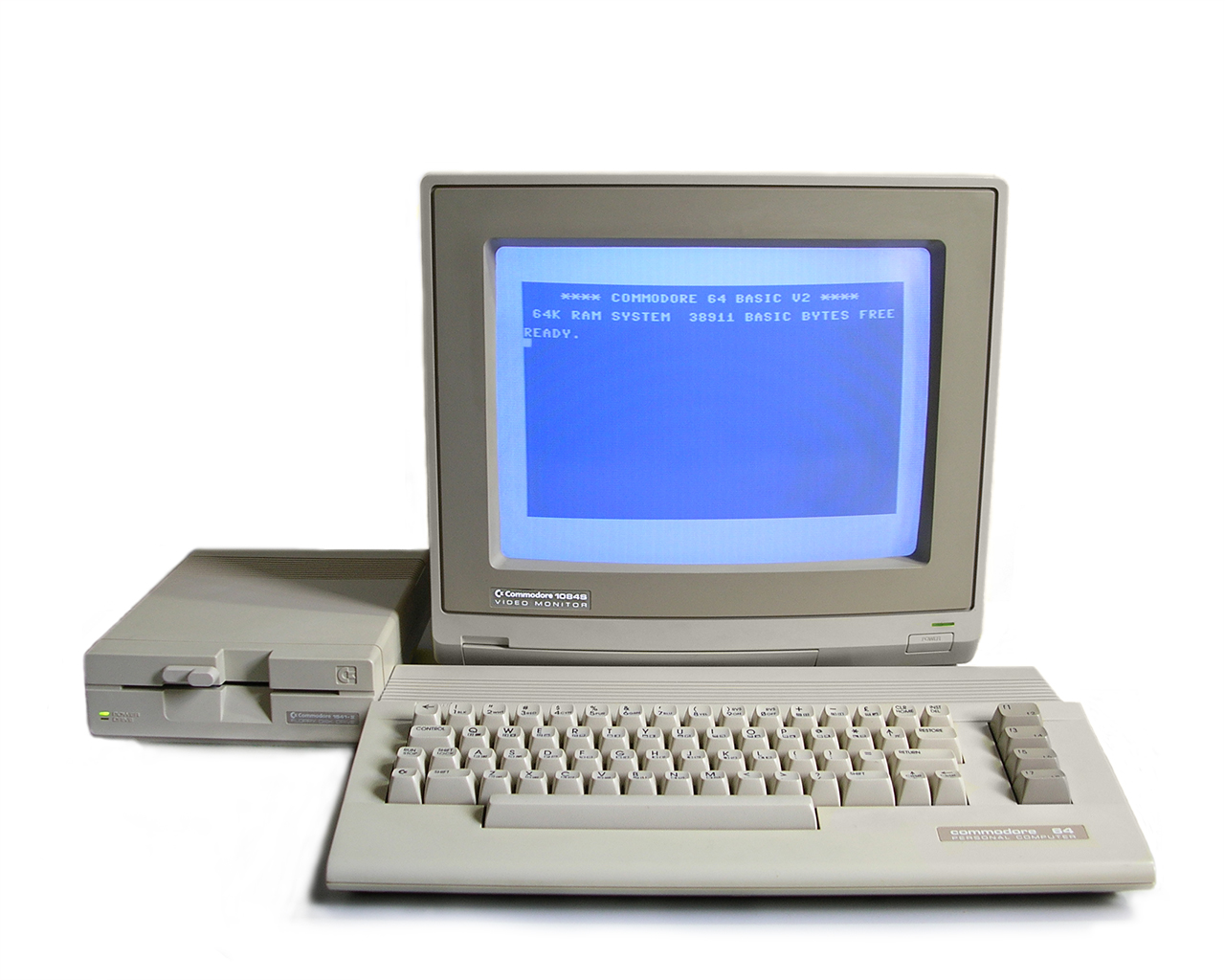COMMODORE 64
The best-selling computer in history of computing

The Commodore 64 is a home computer built by the Commodore Business Machines Inc. The first models
started to come out of the assembly line in the August 1982. It was an unprecedent success with estimate
sales between 17 and 22 milion copies. The processor is a MOS 6510. It has 64 KB of RAM and runs the operating system BASIC 2.0.
The graphic chipset is the VIC-II and the supported resolution is 320 x 200, it has one of the first integrated
computer sound chip, the SID 6581/8580.
The incredible audio-video quality of the Commodore 64 and his low cost made it the most widespread home computer.
The Commodore 64 was born from the idea to produce new chips for high-performance audio and video,
with the hope that they were chosen for future video game console arcade.
When in November 1981 the ICs were ready the director of the Commodore, Jack Tramiel, changed his mind
and ordered his engineers to create a new computer with 64K of memory to be shown at CES in Chicago,
which would take place just six weeks later. By the end of 1981 were ready 5 prototypes of this new
computer called VIC30 and in the two remaining weeks before the fair, the old VIC 20 operating
system was adapted to the new computer. At the fair the C64 was a success and in August 1982 began the mass production.
The processor
The Commodore 64 uss an 8-bit microprocessor built by MOS Technology and called MOS Technology 6510. This processor was only used in the Commodore 64 and its variants. It is the successor of the MOS Technology 6502 with a 6-bit internat I/O port more. The new port is used for to bank-switch the machine's read-only memory in and out of the processor's address space, and to operate the datasette tape recorder. There are two variants of the 6510, the first one is the NTSC and the second one is the PAL. The NTSC version has a frequency of 1,023 MHz and the PAL version has a frequency of 0,985 MHz.
The Graphics
The graphic chipset is the VIC-II. It is a microprocessor used in the Commodore 64 and in the Commodore 128. The VIC-II was designed from Albert Charpentier and Charles Winterble at the MOS Technology. This microprocessor has 47 registers, 31 more than its predecessor. 34 of this registers are used for the control of the sprites, bidimensional figures that can be moved relative to the background. The VIC-II is able to manipulate 8 sprite at the same time and supported 16 colors. In the multicolor mode the resolution is 160 x 200 px and the colors usable at the same time are 4, one for the background and three avaible for every 4 x 8pixel area.
The Sound
The sound chips are the MOS Technology 6581 SID od the MOS Technology 8580 SID. The SID is a mixed-signal integrated circuit, it means that it has both analog circuits and digital circuits. It is able to synthesize three separate voices. The filters are obtained through external capacitors to the chip, with which the chip realizes filters digitally controlled. The introduction of the 8580 resolved a problem of the 6581 which caused a short 'pop' everytime that the volume was changed and had a better sound quality because of the better division of analogic and digital circuits. The 8580 works with a lower tension then the 6581 (9V the first one, 12V the second) which permisses a lower heat dispersion.
External Links
- [Visited on 06/11/2014] Image took from here
- [Visited on 06/11/2014] Wikipedia - Commodore 64
- [Visited on 06/11/2014] Early Home Computers
- [Visited on 06/11/2014] Ready 64